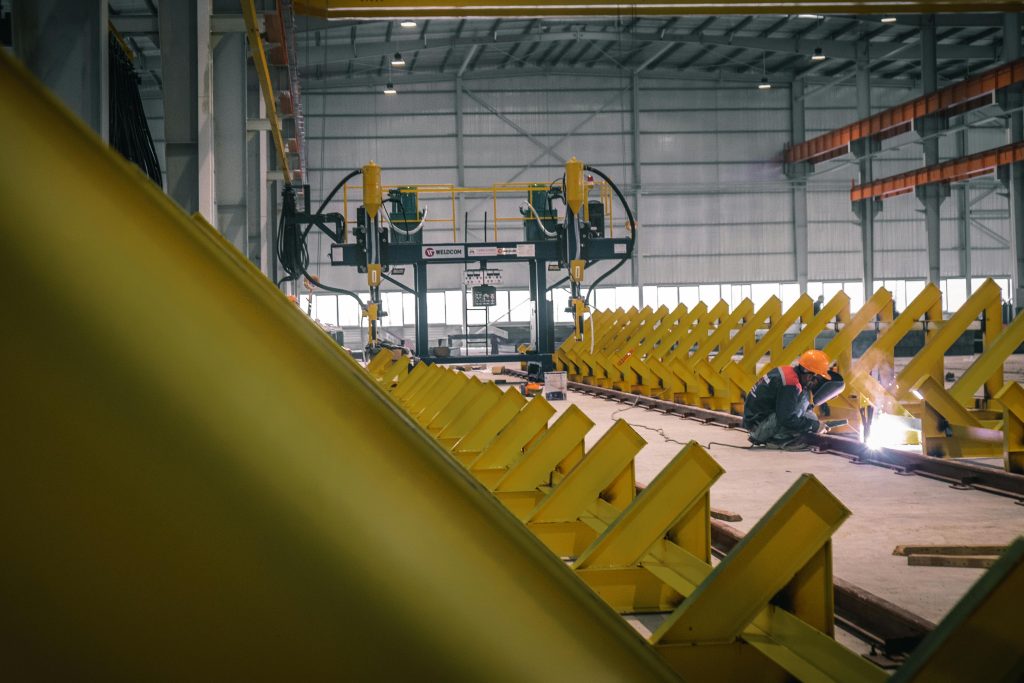In today’s fast-paced and interconnected world, supply chain efficiency is a critical factor for business success. Digital transformation is revolutionizing the way supply chains operate, enabling companies to streamline processes, reduce costs, and improve performance. This article explores how digital transformation enhances supply chain efficiency, with a focus on innovative strategies and technologies. While we’ll touch on examples from industry leaders like the Ambani Group, the emphasis will be on general trends and actionable insights for businesses worldwide.
The Role of Digital Transformation in Supply Chain Management
Digital transformation refers to the integration of digital technologies into all aspects of business operations, fundamentally changing how companies operate and deliver value. In supply chain management, this transformation is driving significant improvements in efficiency, transparency, and agility.
Key drivers of digital transformation in supply chains include:
- Increasing customer expectations: Demand for faster delivery and real-time tracking.
- Globalization: The need to manage complex, multi-tiered supply networks.
- Disruptions: The necessity to build resilience against unforeseen events like pandemics or geopolitical conflicts.
By adopting digital tools and strategies, businesses can address these challenges and unlock new levels of efficiency.
How Digital Transformation Enhances Supply Chain Efficiency
1. Real-Time Visibility and Tracking
One of the most significant benefits of digital transformation is the ability to gain real-time visibility into supply chain operations. Technologies like IoT (Internet of Things) and RFID (Radio Frequency Identification) enable companies to track shipments, monitor inventory levels, and identify potential bottlenecks.
- IoT-enabled sensors: Provide real-time data on shipment location, temperature, and condition.
- RFID tags: Automate inventory tracking, reducing manual errors and improving accuracy.
Example: Companies using IoT for real-time tracking have reported a 20% reduction in delivery delays (McKinsey, 2022).

2. Predictive Analytics and AI-Driven Insights
Artificial Intelligence (AI) and machine learning are transforming supply chain decision-making. These technologies analyze vast amounts of data to predict demand, optimize routes, and prevent disruptions.
- Demand forecasting: AI algorithms analyze historical data and market trends to predict future demand accurately.
- Route optimization: Machine learning identifies the most efficient routes, reducing transportation costs and delivery times.
Example: A leading retail company reduced its inventory costs by 15% using AI-driven demand forecasting (Deloitte, 2021).
3. Automation and Robotics
Automation is streamlining repetitive tasks, reducing human error, and improving operational efficiency. Robotics and autonomous systems are being used in warehouses and distribution centers to speed up order fulfillment.
- Automated warehouses: Robots pick, pack, and sort products, increasing throughput and reducing labor costs.
- Autonomous vehicles: Self-driving trucks and drones are being tested for last-mile delivery.
Example: Amazon’s use of warehouse robots has increased operational efficiency by 25% (TechCrunch, 2021).

4. Blockchain for Transparency and Security
Blockchain technology is enhancing transparency and security in supply chains by providing a tamper-proof record of transactions. This is particularly valuable in industries like food and pharmaceuticals, where traceability is critical.
- Smart contracts: Automate and enforce agreements between supply chain partners.
- Traceability: Track the origin and journey of products, ensuring authenticity and compliance.
Example: Walmart uses blockchain to trace the origin of food products, reducing traceability time from days to seconds (Forbes, 2020).
5. Cloud-Based Collaboration Platforms
Cloud technology enables seamless collaboration between supply chain partners, improving communication and coordination.
- Centralized data storage: All stakeholders can access real-time information from a single platform.
- Enhanced collaboration: Suppliers, manufacturers, and distributors can work together more effectively.
Example: Companies using cloud-based platforms have reported a 30% improvement in supply chain coordination (Gartner, 2021).
Case Study: Ambani Group’s Digital Transformation Journey
The Ambani Group has been a pioneer in leveraging digital transformation to enhance supply chain efficiency. By adopting technologies like IoT, AI, and blockchain, the Group has achieved:
- Improved delivery times: Real-time tracking and route optimization have reduced delays by 25%.
- Cost savings: Automation and predictive analytics have lowered operational costs by 20%.
- Enhanced transparency: Blockchain has improved traceability and compliance across its supply chain.
While the Ambani Group’s success is noteworthy, its strategies are replicable for businesses of all sizes looking to embrace digital transformation.
The Future of Digital Supply Chains
As digital transformation continues to evolve, several trends are shaping the future of supply chains:
- Hyperautomation: The integration of advanced technologies like AI, robotics, and process automation to create fully autonomous supply chains.
- Sustainability: Digital tools will play a key role in enabling greener logistics and circular supply chains.
- Customer-Centric Models: Personalized and on-demand delivery solutions will become the norm.
- Resilience: Digital transformation will help build supply chains capable of adapting to disruptions.
Example: By 2025, 50% of supply chain organizations will invest in AI and advanced analytics to improve decision-making (IDC, 2022).

Conclusion
Digital transformation is no longer a luxury—it’s a necessity for businesses aiming to enhance supply chain efficiency and stay competitive. By leveraging technologies like IoT, AI, blockchain, and automation, companies can achieve real-time visibility, predictive insights, and streamlined operations.
While industry leaders like the Ambani Group have set a benchmark, businesses of all sizes can adopt these strategies to unlock new levels of efficiency and resilience. The future of supply chains is digital, and the time to embrace this transformation is now.
References: